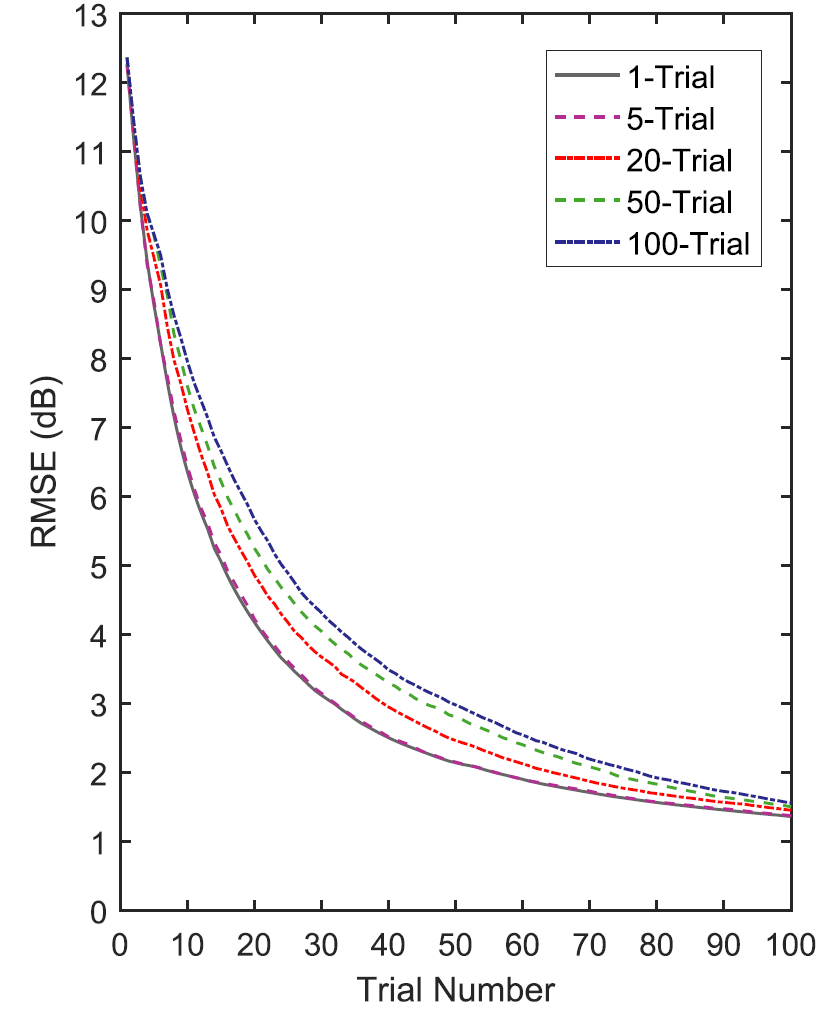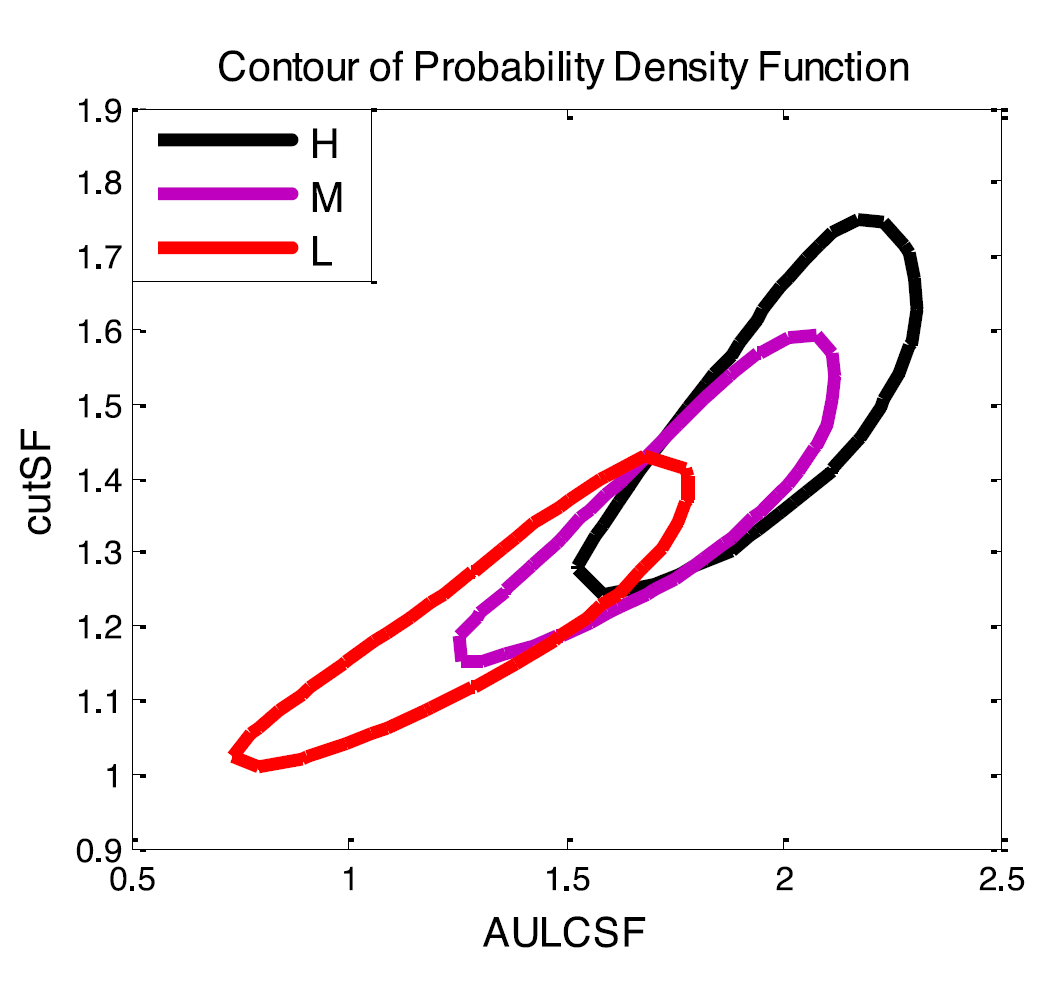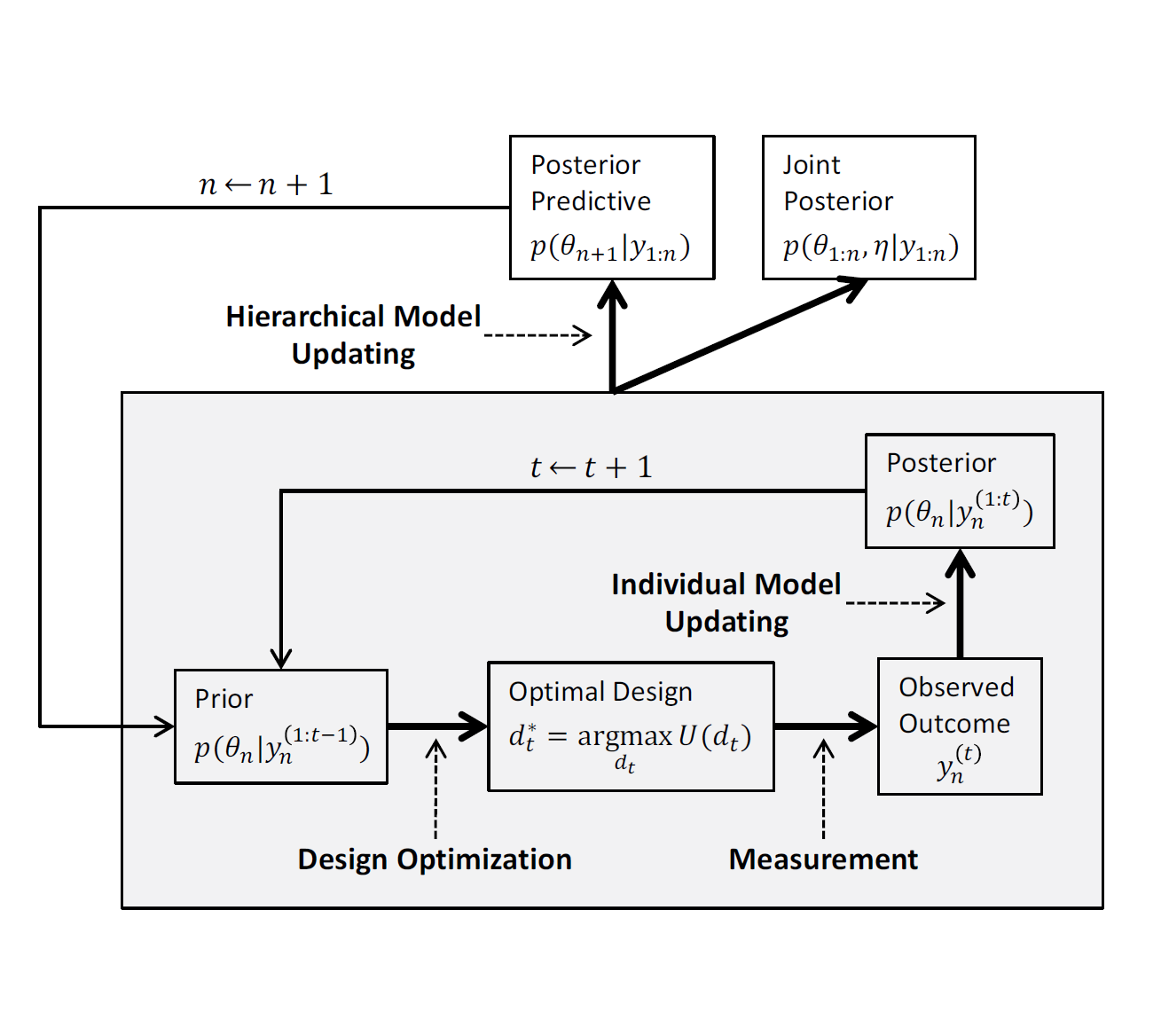(For a full list see below, Dr. Kim’s CV, or his Google Scholar page)
W Kim, MA Pitt, Z-L Lu, & JI Myung

To date, most adaptive experiments have relied on myopic, one-step-ahead strategies in which the stimulus on each trial is selected to maximize inference on the next trial only. A lingering question in the field has been how much additional benefit would be gained by optimizing beyond the next trial. This study applies dynamic programming (DP), a technique applicable for such full-horizon, “global” optimization, to model-based perceptual threshold estimation, a domain that has been a major beneficiary of adaptive methods. The results provide insight into conditions that will benefit from optimizing beyond the next trial.
Cognitive Science, 41, 2234-2252 (2017)
H Gu, W Kim, F Hou, LA Lesmes, MA Pitt, Z-L Lu, & JI Myung

This study empirically validates the method of hierarchical adaptive design optimization (HADO; Kim, Pitt, Lu, Steyvers, & Myung, 2014) in the context of vision testing. The performance of HADO in estimating human contrast sensitivity function is compared with that of standard Bayesian adaptive testing. The improvement with HADO over the standard approach was maintained even when the prior information was constructed from heterogeneous populations or a relatively small number of observers.
Journal of Vision, 16, 15, 1-17 (2016)
W Kim, MA Pitt, Z-L Lu, M Steyvers, & JI Myung

This research proposes a hierarchical Bayes extension of adaptive design optimization that provides a judicious way to exploit two complementary schemes of inference (with past and future data) to achieve even greater accuracy and efficiency in information gain. We demonstrate the method in a simulation experiment in the field of visual perception.
Neural Computation, 26, 2465-2492 (2014)
W Kim, MA Pitt, & JI Myung
Parallel distributed processing (PDP) models have had a profound impact on the study of cognition. One domain in which they have been particularly influential is learning quasiregularity, in which mastery requires both learning regularities that capture the majority of the structure in the input plus learning exceptions that violate the regularities. This study, by conducting, small- and large-scale analyses of a feedforward, 3-layer network, addresses 2 fundamental issues about network functioning: how the model can learn both regularities and exceptions without sacrificing generalizability and the nature of the hidden representation that makes this learning possible.
Psychological Review, 124, 903-916 (2013)
Planning beyond the next trial in adaptive experiments: A dynamic programming approach
W Kim, MA Pitt, Z-L Lu, & JI Myung
Cognitive Science, 41, 2234-2252 (2017)
A theoretical note on the prior information criterion
S Steegen, W Kim, W Pestman, F Tuerlinckx, & W Vanpaemel
Journal of Mathematical Psychology, 80, 33-29 (2017)
Generalization from newly learned words reveals structural properties of the human reading system
BC Armstrong, N Dumay, W Kim, & MA Pitt
Journal of Experimental Psychology: General, 146, 227-249 (2017)
Evaluating the performance of the quick CSF method in detecting contrast sensitivity function changes
F Hou, LA Lesmes, W Kim, H Gu, MA Pitt, JI Myung, & Z-L Lu
Journal of Vision, 16, 18, 1-19 (2016)
A hierarchical Bayesian approach to adaptive vision testing A case study with the contrast sensitivity function
H Gu, W Kim, F Hou, LA Lesmes, MA Pitt, Z-L Lu, & JI Myung
Journal of Vision, 16, 15, 1-17 (2016)
A hierarchical adaptive approach to optimal experimental design
W Kim, MA Pitt, Z-L Lu, M Steyvers, & JI Myung
Neural Computation, 26, 2465-2492 (2014)
A hierarchical adaptive approach to the optimal design of experiments
W Kim, MA Pitt, Z-L Lu, M Steyvers, H Gu, & JI Myung
Proceedings of the Cognitive Science Society 36 (2014)
How do PDP models learn quasiregularity?
W Kim, MA Pitt, & JI Myung
Psychological Review, 124, 903-916 (2013)
A tutorial on Bayes factor estimation with the product space method
T Lodewyckx, W Kim, MD Lee, F Tuerlinckx, P Kuppens, & E-J Wagenmakers
Journal of Mathematical Psychology, 55, 331-347 (2011)
A model-based fMRI analysis with hierarchical Bayesian parameter estimation
W-Y Ahn, A Krawitz, W Kim, JR Busemeyer, & JW Brown
Journal of Neuroscience, Psychology, and Economics, 4, 95-110 (2011)
Cognitive mechanisms underlying risky decision-making in chronic cannabis users
DJ Fridberg, S Queller, W-Y Ahn, W Kim, AJ Bishara, JR Busemeyer, L Porrino, & JC Stout
Journal of Mathematical Psychology, 54, 28-38 (2010)
A survey of model evaluation approaches with a tutorial on hierarchical Bayesian methods
RM Shiffrin, MD Lee, W Kim, & E-J Wagenmakers
Cognitive Science, 32, 1248-1284 (2008)
Global model analysis by parameter space partitioning
MA Pitt, W Kim, DJ Navarro, & JI Myung
Psychological Review, 113, (2006)
Model evaluation, testing and selection
IJ Myung, MA Pitt, & W Kim
Handbook of Cognition, 422-436, (2005)
An MCMC-based method of comparing connectionist models in cognitive science
W Kim, DJ Navarro, MA Pitt, & IJ Myung
Advances in Neural Information Processing Systems, 16 (2004)
Flexibility versus generalizability in model selection
MA Pitt, W Kim, & IJ Myung
Psychonomic Bulletin & Review, 10, 29-44 (2003)
Global model analysis by landscaping
DJ Navarro, IJ Myung, MA Pitt, & W Kim
Proceedings of the Cognitive Science Society 25 (2003)